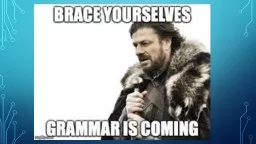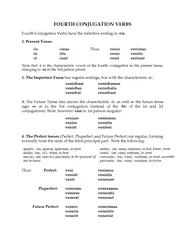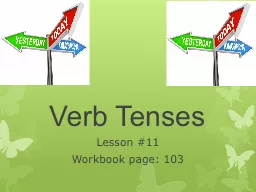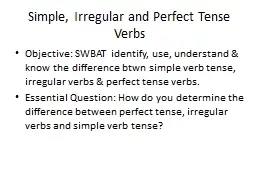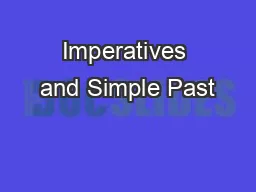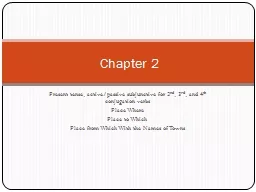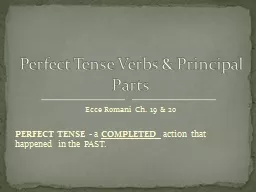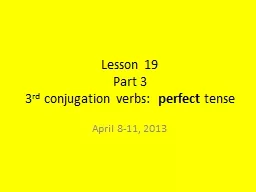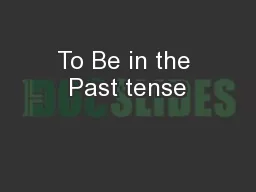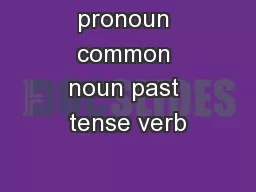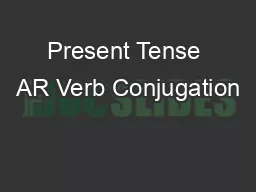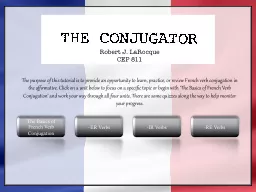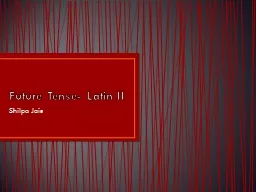PPT-Past tense – ar verb conjugation
Author : contera | Published Date : 2020-07-01
Yo Nosotros Nosotras Tú Vosotros Vosotras Spain amp a few other countries only Él ella Ud Ellos Ellas Uds First lets review subjectssubject pronouns
Presentation Embed Code
Download Presentation
Download Presentation The PPT/PDF document "Past tense – ar verb conjugation" is the property of its rightful owner. Permission is granted to download and print the materials on this website for personal, non-commercial use only, and to display it on your personal computer provided you do not modify the materials and that you retain all copyright notices contained in the materials. By downloading content from our website, you accept the terms of this agreement.
Past tense – ar verb conjugation: Transcript
Download Rules Of Document
"Past tense – ar verb conjugation"The content belongs to its owner. You may download and print it for personal use, without modification, and keep all copyright notices. By downloading, you agree to these terms.
Related Documents

